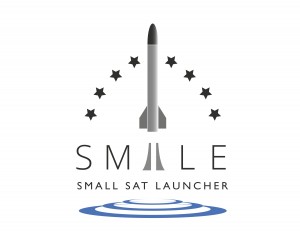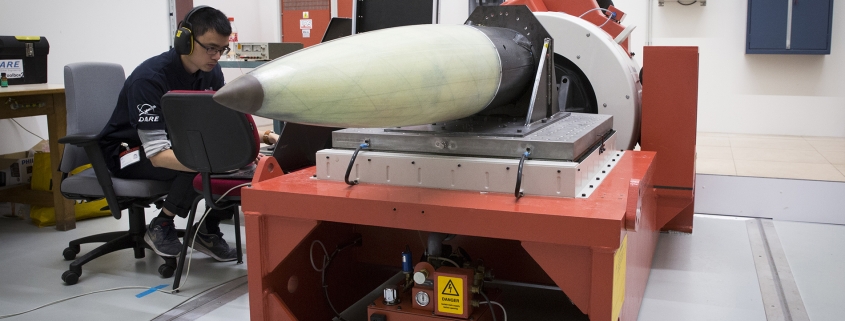The beginning of June, a so-called ‘avionics box’ developed by the Netherlands Aerospace Centre (NLR) for the Stratos III rocket was successfully subjected to an important vibration test. The researchers applied forces that correspond to those occurring during the actual launch. The nose cone, the on-board computer and the avionics box successfully withstood the vibration test, marking the completion of a key phase in the development of the Stratos III rocket, which is designed and built by the Delft Aerospace Rocket Engineering (DARE) group at Delft University of Technology. The upcoming launch of the rocket on 16 July in southern Spain is expected to achieve a European altitude record for rockets designed by students, and will contribute to the EU’s aim of developing low-cost European launch systems.
The avionics box is the only payload on board the rocket. It records flight data such as the rocket’s location and position using gyroscopes and Global Navigation Satellite Systems (GNSS) like Galileo and GPS. The resulting data is saved in the on-board computer and partially transmitted to the ground station during the launch. The challenge was to develop an avionics box that consists of light-weight, affordable components that are commercially available, but that is also capable of withstanding the forces that occur during the launch. The researchers first had to integrate the box in the rocket’s nose cone and connect it to the on-board computer. The box performed well and subsequently proved capable of withstanding the large forces exerted on it.
After the launch, the researchers will analyse the measurement data and compare them to highly accurate external position measurements performed during the rocket’s flight. This will enable them to determine if the low-cost and light-weight components are of sufficient quality and provide sufficient accuracy to be used in the rocket’s navigation system.

The avionics box, the payload of the stratos III rocket, is part of the European SMILE project (SMall Innovative Launcher for Europe), an NLR coordinated collaboration between fourteen partners from eight different European countries. SMILE is aimed at developing a small, affordable light-weight European rocket that is capable of simultaneously launching multiple small satellites into space. A series of small satellites operating at lower altitude is more cost-efficient and less vulnerable than a single large satellite orbiting at a greater distance from the earth. In addition, such a constellation of satellites will contribute to a more complete and up-to-date picture of the earth. The satellites can for example be used for telecommunications, earth observation or monitoring the climate. Europe wants to gain an independent, competitive position in this market. SMILE is being financed by the EU’s Horizon 2020 innovation programme, has a budget of EUR 4 million, and runs from January 2016 through to December 2018.
NLR plays a key role in SMILE. It serves as the independent coordinator of the project, bringing together a range of European partners and ensuring knowledge development and exchange in this promising market. NLR’s expertise in small launch systems, electronics and vibration and simulation testing is essential for the development and testing of launch systems. In addition, NLR’s VST facility (Vibration and Shock Testing) is the only one of its kind in the Netherlands, offering unique opportunities for research in aerospace as well as other fields.
See also the SMILE website: https://www.small-launcher.eu/
See also the DARE/Stratos III website: http://dare.tudelft.nl/stratos-iii/
See also crowdfunding site: https://www.supporttudelft.nl/project/make-stratos-fly

 This research was funded from the EU’s Horizon 2020 Research and Innovation Programme, but neither the report nor this press release necessarily reflects the views of the European Commission.
This research was funded from the EU’s Horizon 2020 Research and Innovation Programme, but neither the report nor this press release necessarily reflects the views of the European Commission.

 NLR - Netherlands Aerospace Centre
NLR - Netherlands Aerospace Centre
 Ger Nielen (NLR)
Ger Nielen (NLR)